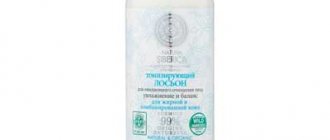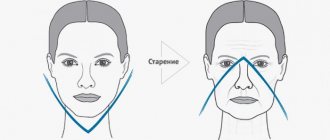Bitrate (English) - means the value (number) of bits that is used to record or transmit multimedia material lasting for one second. When recording multimedia (audio and video) content in MP3 format, it is compressed block-by-block using certain procedures (algorithms). And these algorithms are divided into types depending on the bitrate (its value). Each of these blocks (frames) is allocated from thirty-two to three hundred and twenty bits.
The VBR, CBR and ABR algorithms used for encoding in the MP3 format do not ensure complete preservation of quality - it is lost. However, this can only be felt when viewing (playing) only on high-quality equipment.
To the unprofessional eye, material recorded using VBR, CBR and ABR mechanisms will look quite high quality.
Let's analyze the differences in the VBR, CBR and ABR algorithms in order to know which one to use correctly for recording and subsequent storage or transfer of files. Which one is better for quality or for solving other problems.
Constant bit rate
As the name suggests (constant), in this type of algorithm a constant number of bits are allocated per second of material. All blocks are equal to each other.
Thanks to the use of CBR, it is possible to know in advance the size of the source file or the width of the stream. This is important for transmitting information over channels with limited width.
Using this encoding is not ideal:
- when recording empty segments, the consumption of allocated bits remains the same;
- when recording complex fragments, for which, in principle, it would be worth allocating more space, the bitrate again remains set.
Quality shortcomings when recording “complex” sections are solved by increasing the bitrate, for example, to a maximum of 320 kbit/s, but at the same time the width of the transmission stream or file size increases.
The State Duma responded to ADB’s proposal to block accounts for suspicious transactions
The Association of Banks of Russia (ADB) proposed that banks block clients' cards for 30 days if there is a risk of suspicious transactions. In this case, the cardholder will not be warned. ADB believes that this change should be introduced into Russian legislation.
Chairman of the State Duma Committee on the Financial Market, deputy Anatoly Aksakov believes that it is necessary to treat this idea with caution. According to the deputy, banks already have the right not to carry out transactions if there are doubts about their reliability. But the account owner must be warned.
Experts believe that if such a proposal is approved, no time will be wasted when an attacker can use the card.
“If a client who has lost his money reacts quickly and reports the theft to the bank, then the sending bank no longer has any legal grounds for returning the funds,” ADB Vice President Alexey Voylukov the Kommersant newspaper.
Usually, the defrauded cardholder learns about the fraudsters’ debiting of money after the fact. Therefore, it is proposed to remove the blocking only if the client proves the legitimacy of the transaction.
According to Deputy Aksakov, we are talking about receiving banks, and not about sending banks. This problem requires discussion, the parliamentarian notes.
“But the problem is that the money leaves the recipient bank and goes to the attacker’s account. Typically, this money is very difficult to catch. There are certain restrictions, but initially there must be a signal from the sending bank that the operation is unauthorized for the owner of the funds,” Aksakov said in an interview with the Federal News Agency .
This proposal requires study, since indeed such complaints are often received from citizens. There are often cases of blocking of funds in sending banks of not only citizens, but also funds of entrepreneurs, the parliamentarian emphasizes.
“This creates problems for business. Therefore, I would definitely not support these conditions. There needs to be serious discussions with bankers, the central bank and the business community before making a decision. It must be balanced and systematic. In addition, the legislative decision, which has already been implemented, to block transactions and inform the client about such an operation, has led to the fact that attackers call and tell clients about a dubious transaction.
The attackers then extract information and transfer money unauthorized. There is no need for point solutions here. This includes the interaction of telecommunications companies, security forces, and the central bank, which could instantly identify such phones belonging to attackers and turn them off,” the deputy said.
Earlier it was reported that banks warned Russians about massive attacks by fraudsters trying to gain access to citizens’ accounts. To do this, credit institutions send notifications via SMS and email, and also publish relevant information on websites and social networks.
It also became known that credit institutions participating in the fast payments system (FPS) have again postponed the introduction of fees for transfers.
Variable bit rate
It is easy to guess that this type of method (VBR) is a variable (variable, English).
What is characteristic of such encoding is that the bitrate in this case changes during the encoding process with the codec program. And the bitrate in this case depends on the saturation of the audio or video material.
That is, when choosing VBR encoding, the program will select a lower bitrate for recording an empty picture, and a higher bitrate for recording rich pictures or rapidly changing images.
The downside to this algorithm is that it is difficult to predict upcoming changes. An increase in bitrate during recording will actually occur with a delay.
In addition, fragments that sound quiet are perceived during VBR encoding as fragments of no importance, and on this basis a minimum bitrate is allocated for them.
Therefore, CBR with a maximum value of 320 kbps will provide better quality.
True, VBR 2 Pass encoding has now appeared.
Its essence is that the program first analyzes the multimedia stream (for the first time), and then compresses it based on the data obtained during the initial scanning. This gives better results in terms of quality, and in this sense this encoding is better.
Time deposits
Today Rossiya Bank offers to take advantage of the following offers:
- "Scarlet Sails".
- "Classical".
- "Universal".
“Scarlet Sails” is a seasonal deposit, opens from June 1 to August 31.
All types of deposits have a limited period, no more than 5 years, with the exception of the “Demand Deposit” deposit, which does not have a limited period. Among all the offers, Bank Rossiya offers time deposits. This must be remembered first of all by those planning to use this product.
Attention! It is very important to monitor all bank offers on interest rates, which may change over time. Therefore, if you have never used the services of this bank, you need to periodically go to the official website of this financial organization and see if there have been changes in the conditions for opening the deposit you are interested in.
"Scarlet Sails"
- Profitability – up to 6.45% per annum;
- Deposit amount – from 3000 rubles;
- Individual terms for placing a deposit – from 31 to 367 days;
- Possibility of replenishment for deposits for a period of 101 days or more.
Deposit currency: Russian rubles
The Scarlet Sails deposit has restrictions when opened by third parties. In this case, the person who opened the deposit will not receive interest.
Interest: Interest is paid at the end of depositing the amount into the account.
"Classical"
- Profitability – up to 6.00% per annum;
- Deposit amount – from 3000 rubles;
- Deposit term from 1 to 5 years;
- Possibility of replenishment;
- Interest capitalization;
- Automatic renewal possible.
Deposit currency: Russian rubles.
The “Classic” deposit allows for the possibility of replenishing any amount, but there are restrictions. For example, if you open an account for a year, then you cannot deposit additional amounts into it if there are 90 days left before the opening date.
Interest: the transfer is made to a special account, the depositor manages it independently, transferring it to the account “On demand” or as an investment to the invested amount.
"Universal"
- Yield up to 5.85% per annum;
- Deposit amount – from 3000 rubles;
- Deposit term – 181 or 367 days;
- Possibility of replenishment and partial spending;
- Automatic renewal possible.
Deposit currency: Russian rubles.
The nuance of the “Universal” deposit is that if the balance of the pre-threshold level increases, the amount of the non-reducible balance will be the same.
Interest: interest can be credited in 2 ways - at the end of the period or every month. Methods of depositing: to a personal card account, a savings account “On demand” or adding to the deposited amount.
Demand deposits.
A demand deposit is the safe storage of money, the ability to make money transfers not related to business activities, as well as receive transfers.
- Opening and maintaining a demand deposit is free of charge;
- Minimum deposit amount: 10 rubles;
- Deposit term: on demand;
- Interest payment: monthly;
- Additional deposit of funds: no restrictions;
- Withdrawal: no restrictions;
Currency: Russian rubles.
The On Demand program is terminated automatically as soon as the withdrawal amount is reduced to the non-reducible balance.
Interest: will be calculated on all accounts every month.
Insurance of all deposits in Bank Rossiya is carried out at the state level; for this, the bank has agreements with the Deposit Insurance Agency. Deposit insurance is mandatory.
It is regulated by Law No. 177-FZ of December 23, 2003, which still operates with new modifications and amendments. The insurance premium is 100% of the premium amount, but not more than 1.4 million rubles.
These insurance conditions apply to premiums for which the insured event occurred in the period after 12.29.2014.
The insurance amount does not add up and is paid separately for each premium if several are issued for one person (company).
Average bit rate
Average is translated from English as average. This is a type of ABR, which is in some way a cross between VBR and CBR.
When choosing the ABR mode, the user sets a certain value in kilobits per second. The codec can change it in one direction or another, adhering to the established average value.
The ABR method compares favorably with others in the assigned number of bits per second. You can choose absolutely any numeric parameter from 8 to 320. While CBR encoding can only use sixteen times the value.
From the above it follows that if the size of the resulting file is important for the result, then for the highest quality it is better to take a closer look at ABR or CBR encoding.
Otherwise, pay attention to the VBR 2 Pass method.
In this article you learned about VBR, CBR and ABR encodings. Now you know how each one is different, which one is better for your specific task, and which one you should choose.
I have received a lot of mail on the subject of ABR and everything related to it. The most complete answers to typical questions - what is ABR, can classes cause harm, how much should you do, when can you join, etc.
What is ABR?
The biomechanical rehabilitation (ABR) technique is a unique method that allows you to achieve a clear improvement in the condition of the musculoskeletal system and significant progress in motor functions, including in the most serious disorders of these motor functions.
Where can I see the results of practical application of ABR? And how unique are they?
Firstly, on the “head” ABR website www.blyum.com, specific results are shown in flash animation mode, and on the websites of ABR regional branches there are stories about the successful results achieved in the practical application of ABR.
All stories are targeted, (most often) you can write to mothers of children with cerebral palsy (unfortunately, only in English) and find out details that are not included in the published version. Secondly, on a free DVD containing the film “ABR Facts”
(voice languages - Russian and English, subtitles - Russian, English and German, the menu also contains a full text version of the voice-over commentary).
To order this disc, just write a request to the address
.
The application must indicate the zip code, full postal address, full name of the recipient, diagnosis and age of the person (child) with cerebral palsy. The Russian translation presented on the disk can be found here. (It should be noted that many people ask to send this disk, perceiving it as a methodological manual - We would like, if possible, to receive a disk with this technique
. This is a little wrong, the disk contains the methodological foundations of ABR, but
is not a didactic manual
, unfortunately) . We cannot talk about uniqueness, in the sense of the frequency of occurrence of similar results. ABR is a mass rehabilitation technique (1), which has virtually no contraindications (2), and is available to almost every family that has children (or adults) with cerebral palsy or “traumatic” patients with impaired motor functions (3). We also cannot talk about uniqueness as an assessment of the progress achieved. Not because of excessive modesty, but because a person (child) with cerebral palsy has a unique opportunity to repeat (or go through) the sequence of phases of the natural biomechanical development of a healthy child. And also because of the numerous and planned similar successful results of the practical use of ABR.
The ABR technique has a unique resolution - it is able to change (normalize) the deformed structure of the musculoskeletal system, which leads to noticeable progress in motor functions - both in the most “severe” and, even more so, in “mild” cases.
How are classes going? How is such progress possible? Who does the exercises?
The practical implementation of ABR occurs as follows: a person (child) with cerebral palsy is in a lying (or sitting with support) position that is comfortable for him and the only thing that is required of him is to maintain this position, i.e.
relaxed, without moving (you can use visual stimulation - combine classes with watching cartoons or films). Parents perform the exercises (together or one at a time). You can learn about the technique of performing exercises - “entries”, “approaches”, vectors and planes of influence at our regular training sessions. Unfortunately, verbal formalization of the practical part is difficult, and in part even impossible. Progress in the form of structural normalization and improvement of functionality is possible through the formation of a “visceral hydraulic skeleton
,” which emphasizes the leading role in the postural control of the smooth muscles of the internal organs.
In other words, we do not act on the superficial muscles, but restore the strength and tone of the internal muscles
- the smooth muscles of the internal organs.
This is very concise and brief; a somewhat more detailed description can be found here. So, we are TRAINING parents in ABR classes. You are already working with children, i.e. perform the prescribed exercises that you learned during the ABR session at home. According to an individual rehabilitation program. And our main goal is the dissemination and practical implementation of ABR
as a non-alternative rehabilitation technique.
How do you measure progress? What gives you the right to say that progress has been made?
We measure progress in the sequence of natural biomechanical development of a healthy child and not in ephemeral categories in the form of
“started to sit”
, but in confident and
full independent sitting
, and not on the floor (with support on arms and legs), but on a chair or bed (with supported on the pelvis and without support). That is why we assign a significant role to biomechanical testing - when, with the help of numerous tests, the current level of biomechanical development of a given person is examined. These tests make it possible to visually study the limitations of functional motor skills caused by structural deformations of the musculoskeletal system, and they will also be an unambiguous indicator of normalization of the structure. As an introduction to the ABR approach to the main stages of biomechanical development, we can offer.
Is the ABR technique “gentle”? Can exercise cause harm?
No, correct execution of exercises increases the “return” and effectiveness of the exercises. Improper technique for performing ABR exercises cannot cause harm. The ABR technique can certainly be classified as a “gentle” rehabilitation method - no stretching, no active influence, no violent movements against muscle resistance.
Will ABR classes provoke a resumption of epileptic seizures? Has the ABR technique ever been applied to children with epilepsy?
General statistics: approximately 50% of several hundred children trained using the ABR method have epilepsy, expressed to one degree or another. In principle, epilepsy is not an obstacle to achieving motor and psycho-emotional progress when practicing the ABR method. The presence of seizures is only one of the external signs, reminiscent of the presence of disorders in the central nervous system, but in no way the root cause of damage to the musculoskeletal system. The presence or absence of epilepsy is not the main prognostic criterion in terms of how “responsive” a child will be to ABR classes. Much more important criteria are the general state of health (primarily the respiratory and digestive systems), the state of the “quality” of the tissues of the musculoskeletal system, the presence/absence of surgical interventions, the degree of aggressiveness of the pharmacological background, etc. In cases where attacks represent a certain “basic background”, after which the child quickly returns to his normal state; the presence of epilepsy does not create any additional specific problems. Epilepsy complicates the rehabilitation process only in cases where epileptic seizures lead to a deterioration in the general state of health - degradation of the functions of the respiratory and digestive systems, as well as the development of sleep disorders, general irritability, etc. However, in any case, the presence of these difficulties is not is a contraindication for training using the ABR method and is not an insurmountable obstacle. Yes, there are additional difficulties that must be taken into account in the rehabilitation strategy, but nothing more (far from the only ones and not the most difficult ones.) The full answer to this question has been published (a continuation of the answer has been published due to the significant volume).
How much should you study? Should I do the daily “norm” continuously or can I do it in small “portions” throughout the day?
We cannot prescribe the intensity of classes for you (the parents) for a simple reason: some work, some are completely focused on the family, and some also have other children.
It is your own decision - what compromise with your usual way of life you are willing to make. The main thing that we strive to convey to the parent of a child with cerebral palsy is that structural deformations are changeable and clearly normalizable. They are not forever. And even in the most severe cases, functional progress is possible as a consequence of structural normalization. And 1,000 ABR working hours can change the life of any child with cerebral palsy for the better, which is why we designate the first session-visit as “introductory” and introductory not in the sense that we meet and you hear slightly unusual things, but in the sense that you get the opportunity to independently assess the normalizability of your child’s structural deformations, as a result of your personal efforts. The transition of a child to the next stage of biomechanical development (progress in rehabilitation) is always accompanied by an impulse to work, which can then turn into “fading” and then into “smoldering” - and precisely in order to avoid a shift in the focus of attention and relaxed inertial expectation “When will he start...”
and there exists our proposed structure of sessions-visits in three months.
Some people don’t need it (for example, a family consistently “gives out” three hours every day), but others (with 15 minutes daily, for example) really need these visits. We do not insist on rigid acceptance of the proposed program - you can come twice a year, you can do ABR for an hour every day, but for your child it is better if you try to study as closely and intensively as possible
. That is why we invite to the course not only the parent and the child, but the whole family - both mother and father, grandparents are very welcome, nurses, babysitters and physiotherapists - all those who have the opportunity to work with the child. And of course, you don’t need to break your usual way of life so thoroughly, you can perform the exercises during the day in several “approaches”, for example, in the morning the mother works with the child, in the afternoon - the grandmother, and in the evening - the father, the main thing is the correct technique of performing the exercises and the total set working hours.
What is the structure and content of the visit-sessions? What is included in the mandatory program?
The program of the session-visit, in addition to assessment - biomechanical testing of your child, conducted twice a year by Leonid Blum (January/August) and Alexey Smirnov (May/November), includes: - practical classes (with the child - the whole family, all those who will or has the opportunity to work with the child) under the supervision of ABR instructor Boris Dudko (three hours daily).
The purpose of which is to directly train “families” in ABR techniques and prescribed exercises, according to the rehabilitation program. — lecture-theoretical course (two to three hours daily). Where you can get an idea of the causes of structural deformations of the musculoskeletal system, and ways of testing functional-motor limitations in people (children) with cerebral palsy. Thus, the structure of the session we propose allows you to get answers to vital questions for you - “
how does the structure of a child with cerebral palsy differ from the structure of a healthy person”
(the purpose of biomechanical testing), “
why does the structure of a child with cerebral palsy differ?
What is the reason?" (the essence of lecture classes) and “
how this can be corrected”
(the essence of practical classes).
How much does it all cost? What is the schedule for 2006?
First visit session:
January (18-24)
(already taken place) Next (second) session:
May (15-25)
(already taken place). Third session: August 31 - September 9. Fourth visit: November (14-19).
Instead of a possible scheme of 2 or 4 visits per year, specifically for the first year, we strongly recommend a scheme of 3 or 4 visits. The importance of the additional visit was motivated.
The cost is as follows:
five-day course = $1200 Planned frequency - 4 times a year. Optionally, a regime of 3 or 2 visits is possible.
Diagnostic assessment conducted by Leonid Blum - $250. Diagnostic assessment conducted by Alexey Smirnov - $125.
Total, annual course: 4 visits = $5,550 3 visits = $4,225 2 visits = $2,900.
Once again, the regime of two visits (and even more so, one) is not recommended, and it’s not about money - when choosing it, you must be maximally focused on the process and extremely purposeful, which is quite rare in our hectic, “pharmacological” time.
Only the completed session-visit is paid; no prepayments or advance payments for the year are required. Payment can be in cash or non-cash in a form convenient for you. Unfortunately, we do not have the option of installment plans.
Accommodation and meals are paid separately (we have no relation and are in no way connected with the administration of the training location). Approximate prices can be seen here - Solnechny sanatorium. Naturally, while we do not have a permanent premises, the schedule for the year is approximate. We will make every effort to maintain the stated schedule “from us”; in case of change, we will try to notify you (parents) as early as possible in order to adjust plans and coordinate the timing of sessions. And of course, you can, by notifying us, change the program of visits. Preferably, of course, not in the direction of reduction. Three or four visits are the optimal regime for getting into a working rhythm and getting the first results.
How can I sign up? When can I join (we are currently having financial problems)?
You can sign up by sending a request letter to:
.
In the application, indicate contacts where you can be contacted, details about the person (child) with cerebral palsy - date of birth, diagnosis and medical history, if you have photographs posted on the Internet - provide a link, as well as the rehabilitation program you have chosen (2,3 or 4 visits). If you decide to stay at the sanatorium for the duration of the session, you should definitely indicate the number of people coming. join the ABR program
during any session.
“For some reason, these Ukrainian faces don’t inspire confidence in me.” Why should we believe you?!
In this case, quotation marks mean a verbatim quote from something published on one of the Runet forums.
Omitting the apparent lack of healthy internationalism and the obligatory response call for common sense (Leonid’s biography), I am forced to repeat once again - no one
from ABR
calls for faith
.
Our main goal is to make available not only the ABR technique for the rehabilitation of children with cerebral palsy, but also to spread the ABR concept as widely as possible. What kind of blind/sighted faith? - on the contrary - we always welcome questions, the most tricky and corrosive, and we advocate self-testing - as a check and to obtain objective information about a child with cerebral palsy. We are not afraid to show our faces, we do not hide the details of our biographies, and at the same time we insist that we do not need to be trusted
.
Need to know
. And only you, as a parent(s), are responsible for the future of your children. And how scary it is when your child will have to pay for the illusions, for the results of the “sales” of charlatans and swindlers - with failed functional activity and the need for constant care and “supervision”...
If you have questions about this material, do not hesitate to ask them. If the offered prices seem too high to you, then, at the moment, we are not able to offer otherwise. I hope that with the growth in the number of families included in the ABR rehabilitation process and the formation of a full-fledged Russian center, we will be able to offer you a different format of interaction, with budget prices. We apologize for the distorted market realities that exist in our country at the moment.
Sometimes Abr-1214.com and other COM system errors can be related to problems in the Windows registry. Several programs can use the Abr-1214.com file, but when those programs are uninstalled or modified, sometimes "orphaned" (incorrect) COM registry entries are left behind.
Basically, this means that while the actual path of the file may have changed, its incorrect former location is still recorded in the Windows Registry. When Windows tries to look up these incorrect file references (file locations on your PC), Abr-1214.com errors can occur. Additionally, a malware infection may have corrupted the registry entries associated with Master Hacker. So, these corrupted COM registry entries need to be fixed to fix the problem at the root.
Manually editing the Windows registry to remove invalid Abr-1214.com keys is not recommended unless you are PC service professional. Mistakes made when editing the registry can render your PC inoperable and cause irreparable damage to your operating system. In fact, even one comma placed in the wrong place can prevent your computer from booting!
Because of this risk, we highly recommend using a trusted registry cleaner such as WinThruster (Developed by Microsoft Gold Certified Partner) to scan and repair any Abr-1214.com-related registry problems. Using a registry cleaner, you can automate the process of finding corrupted registry entries, missing file references (like the one causing the Abr-1214.com error), and broken links within the registry. Before each scan, a backup copy is automatically created, allowing you to undo any changes with one click and protecting you from possible damage to your computer. The best part is that eliminating registry errors can dramatically improve system speed and performance.
Warning:
Unless you are an experienced PC user, we DO NOT recommend manually editing the Windows Registry. Using Registry Editor incorrectly may cause serious problems that may require you to reinstall Windows. We do not guarantee that problems resulting from incorrect use of Registry Editor can be corrected. You use Registry Editor at your own risk.
Before you manually repair the Windows registry, you need to create a backup by exporting a portion of the registry associated with Abr-1214.com (eg Master Hacker):
- Click on the Start
. - Type " command
" in
the search bar... DON'T PRESS ENTER YET
! - CTRL-Shift
keys on your keyboard, press
ENTER
. - A dialog box for access will be displayed.
- Click Yes
. - The black box opens with a blinking cursor.
- Type " regedit
" and press
ENTER
. - In the Registry Editor, select the Abr-1214.com-related key (eg. Master Hacker) you want to back up.
- From the File
, select
Export
. - In the Save in
, select the folder where you want to save the Master Hacker key backup. - In the File name
, enter a name for the backup file, for example, “Master Hacker backup.” - Make sure that the Export Range
is set
Selected Branch
. - Click Save
. - The file will be saved with the extension .reg
. - You now have a backup of your Abr-1214.com-related registry entry.
The following steps for manually editing the registry will not be described in this article, as they are likely to damage your system. If you would like more information about editing the registry manually, please check out the links below.
ABR peeling combines cleansing, rejuvenation of the skin and treatment of diseases such as acne, hyperkeratosis, seborrhea. Modern cosmetology offers a wide range of skin cleansing procedures. However, when the goal is not only the delicate removal of dead cells and sebaceous gland products, but also getting rid of a dermatological disease, this circle narrows significantly.
Briefly about the procedure
ABR peeling is a very effective procedure for cleaning and healing the epidermis. This is one of the few cosmetic procedures that can cure dermatological diseases (seborrhea, acne, pimples). It belongs to medium peels in terms of the degree of impact.
ABR peeling is more suitable for problematic and oily skin. A day after the procedure, there will be no trace of acne left, the skin looks healthy, without an oily sheen.
The name of the peeling contains the names of its main components. These are active substances that can stop the development of inflammatory infections in epidermal cells, eliminate their foci, cleanse the pores and inner layers of various types of contaminants and gland products. In addition, all the ingredients of ABR peeling stimulate intracellular processes, neutralize the effects of free radicals and activate the production of collagen fibers, so after the procedure the skin begins to actively renew itself.
The ABR peeling product includes the following components:
- Alpha hydroxyl acids (AHA) - they act on dead cells, stimulate their breakdown and replacement with new ones. Thanks to these active processes, the skin is renewed, becomes more elastic and tightened;
- Beta-hydroxy acids (BHA) – their main task is to cleanse the skin. They reduce the inflammatory process, increase the protective properties of the epidermis and also stimulate the rapid synthesis of elastin and collagen fibers;
- Retinol or vitamin A - normalizes metabolic processes in cells and skin restoration, an invariable assistant in the fight against free radicals. Vitamin A is involved in stabilizing the functioning of the sebaceous glands, which is especially important for oily skin.
In addition to the main ingredients, the composition of the ABR peeling product may include salicylic, ascorbic and fruit acids, fig extract and green tea. They enhance the effectiveness of the drug, soften the skin and increase cell immunity.
Indications for use
Cosmetologists around the world welcome ABR peeling, but still recommend using it only when indicated:
- Acne and acne;
- Residual defects on the skin from acne, post-acne;
- Infiltrates;
- Enlarged pores;
- Stagnant and age spots;
- Wrinkles, signs of early skin aging.
The ABR peeling procedure can be performed not only on the face, but also on the body and décolleté area. But it is recommended to do this after 25 years and only after preliminary consultation with a specialist.
Financial activities of the Asian Development Bank.
The bank's authorized capital was initially $1.3 billion, by the end of the 1970s it increased to $9.5 billion, and by the mid-2000s it exceeded $50 billion.
ADB's banking operations are financed primarily from contributions from ADB member countries, investment income, and borrowing from the global financial market through the issuance of long-term bonds. In fact, we are talking about using the financial resources of developed countries (as the main shareholders of the ADB) to lend to developing countries in Asia (as the main borrowers).
The Asian Development Bank provides loans to developing countries from two funds:
1) from the regular fund for lending on commercial terms for a period of up to 25 years (approximately 2/3 of all loans);
2) from the special fund for Asian development
(Asian Development Fund) for lending to poor countries at a preferential rate (1-3%) for up to 40 years (approximately 1/3 of all loans).
Thus, ADB provides developing countries in the Asia-Pacific region with more favorable conditions than the international private capital market.
Loans are given mainly to government organizations. Thus, in 2004, out of a total volume of loans of 5293 million dollars, loans to governments or under government guarantees accounted for 4947 million (58 projects), and only 0.347 - for lending to the private sector (6 projects). The bank's main borrowers are China (in 2004 it accounted for $1,160 million), India (1,254 million), Pakistan (709 million) and the Philippines (446 million). The overwhelming majority of credited projects are related to transport and communications (in 2004 - 38 projects out of 64), as well as energy (14 projects). In recent years, microfinance projects have been actively used to stimulate small businesses.
Since developed countries are the main source of ADB funds and these same countries control the management of its activities, lending to Asian countries occurs in such a way that in projects financed by the bank, contracts are received primarily by firms from the developed countries themselves. In particular, US firms take the leading positions when receiving contracts.
In the 2000s, ADB plans to gradually introduce a single pan-Asian currency modeled on the euro in the EU. The first stage will be the creation in March 2006 of a virtual (used only for international payments) currency unit “ACU” (ACU), modeled on the European “ECU” (ECU) introduced in 1979. The ACU rate will be calculated as the average value of the currencies of China, South Korea, Japan and 10 ASEAN countries. The use of a supranational monetary unit, which is little dependent on fluctuations in market conditions in individual countries, should stimulate the development of a single Asian market. According to some experts, in the future, the single Asian currency could become a “third force” in the global financial market, competing with the dollar and the euro.
Contraindications
ABR peeling is performed regardless of skin structure and type, even with increased sensitivity of the epidermis.
But, in turn, the peeling procedure has an impressive list of contraindications:
- Pregnancy at all stages;
- Breastfeeding period;
- Allergic reaction to the components of the drug;
- Exacerbation of herpes;
- Somatic diseases of a complex nature;
- Open wounds, abrasions and other skin damage;
- Inflamed skin, tan;
- Thyroid disorders;
- Increased photosensitivity;
- Oncology;
- Psoriasis, eczema, certain types of dermatitis;
- Less than six months have passed since treatment with isotrethione;
- Less than 7 weeks have passed since the previous peeling procedure.
What kind of organizations are indicated in the SMS message?
RRCC stands for “Russia Cash Settlement Center”. It belongs to the Rossiya Joint Stock Bank and is engaged in the following activities:
- cash service and settlement between structures engaged in commercial activities;
- financial services to executive authorities;
- checking accounts and recording settlements among credit companies;
- storage and manipulation of funds and material assets;
- maintaining accounts;
- storage of documentation and banking data;
- checking accounts held by the central bank.
The organization serves military units, treasuries, as well as financial institutions in Lithuania, Georgia, Estonia and many other countries. Among the main goals of the AB are: strengthening the banking system and developing the sectoral economy. Joint Stock Bank "Russia" has no relation to fraudsters and adheres to the advanced standards of customer service adopted by the Code regulating the activities of financial and banking institutions.
Pros and cons of the procedure
The ABR peeling procedure is loved by many thanks to the following advantages:
- Delicate cleansing of skin and pores;
- Effective removal of acne and pimples without residual scars;
- After the procedure, the complexion of the face is noticeably evened out;
- The active components of the peeling product tone the skin and start the process of their active restoration;
- High rejuvenating effect after peeling;
- No pain or discomfort during cleaning;
- No age restrictions;
- Complications and side effects after the procedure are minimal.
The full picture of ABR peeling will be completed by its main disadvantages:
- The need to prepare for the procedure;
- Mandatory use of high-quality sunscreen cosmetics after peeling;
- Expensive;
- The need for a repeat procedure.
The full course of ABR facial peeling procedures ranges from 5 to 8 sessions, depending on the complexity of the skin problem. There is a two-week break between sessions.
Order of conduct
The ABR facial peeling technique requires a short preparatory period. It lasts 5 days and involves treating the problem area with special preparations that contain glycolic acid. They ensure effective penetration and active action of the main components during peeling.
Direct peeling includes:
- Thorough cleansing of the skin - for this, use soaps containing ichthyol, azulene, and sugar.
- Toning – the entire area, including eyelids and lips, is treated with a special lotion. It will moisturize the epidermis well.
- Application of ABR composition - the entire area of the face is treated, excluding the area near the mouth and eyes. This must be done in strict sequence: forehead, temples, area behind the ears, neck, chin, cheeks, area between the lip and nose. You need to hold the product for 5 minutes.
- Repeated treatment of the product - the same composition is applied to problem areas and left for 20 minutes.
- Removing product residues - using a cotton pad soaked in water, the composition is washed off from the skin.
- Applying a neutralizer - a special lotion is distributed over the entire treated area. Light massage is allowed. After 10 minutes, the product is washed off with cool water.
- Improvement and narrowing of pores - at this stage an effective skin mask is made. It whitens, relieves inflammation and tightens pores. After 20 minutes, the mask is washed off. Next, azulene lotion and panthenol are applied.
- To consolidate the procedure, a special cream is applied to the skin. It moisturizes the epidermis and prevents the appearance of age spots and freckles.
To ensure that the rehabilitation period passes quickly and without complications, follow all the recommendations of the cosmetologist. Be sure to provide intensive hydration and protect the skin from ultraviolet radiation after peeling. It is effective to use creams based on hyaluronic acid during this period.
ABR peeling is an opportunity to quickly and painlessly bring your skin back to life, gently cleanse it, heal it and rejuvenate it. After a course of procedures, it will delight you with lightness and freshness, healthy shine and a smooth, delicate surface. Be beautiful!











